What Is Affiliate Marketing & How Does It Work?
Affiliate marketing is a performance-based marketing practice that involves individuals or businesses promoting another company’s products or services. And earning commissions for the results they drive.
Here’s how it works:
Affiliate marketers (publishers or creators) generate content containing referral links provided by the affiliate program or merchant. Meaning they help the program or merchant generate more sales or leads.
The affiliate program or merchant then tracks the leads or sales that come through an affiliate’s unique link. And pay commissions to affiliate marketers based on the agreed-upon terms of the program.
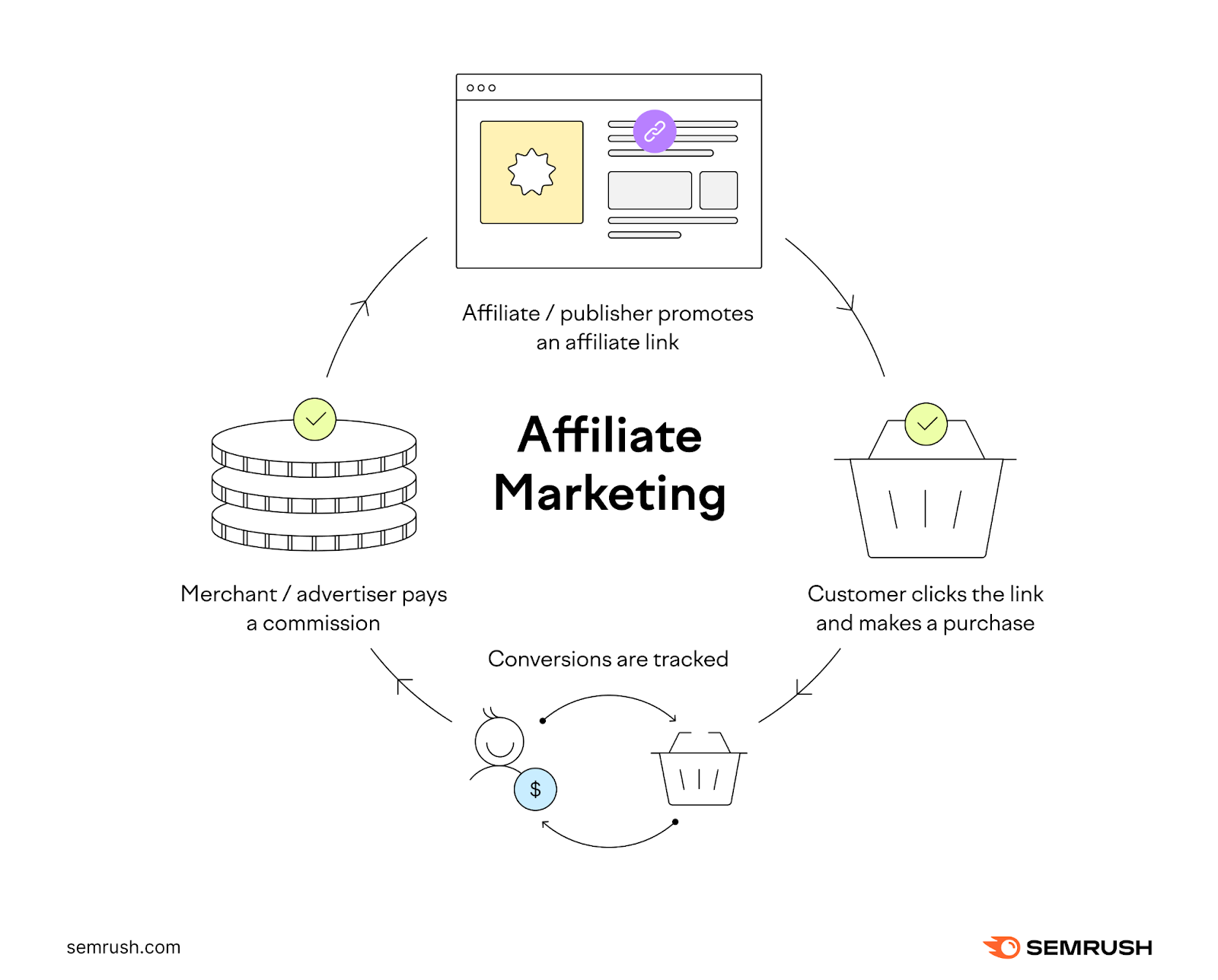
The 3 Types of Affiliate Marketing
There are three main categories of affiliate marketing.
Let’s take a look at each type in more detail:
Unattached
Unattached affiliate marketing means you have no experience using the products or services you promote. And you don’t have any experience in the niche.
Often, unattached marketing involves including affiliate links in pay-per-click (PPC) ads in the hope that users will click them, make a purchase (or another conversion), and earn you a commission.
This option is popular among those who want to quickly generate income with little work, but it’s not always a great way to approach affiliate marketing. Because you have no way of building a trusted audience and scaling potential income in the long term.
Related
This model involves recommending products and services related to your niche to appeal to those you already have credibility with and the potential to influence.
You won’t need to put in a lot of effort beyond doing some research on which products or services to feature.
But there are risks.
If the recommended product or service is below users’ expectations, it could diminish the trust you worked hard to build with your followers. And keep them from coming back.
Involved
Involved affiliate marketing means you’ve used the products or services you’re promoting. Which can help you connect to your target audience on a deeper level.
With this model, ensuring you’ve actually tried what you’re promoting is important for maintaining credibility with your audience.
The good news is it’s easier to produce content about products or services you know well. And it makes your marketing more authentic.
How Do Affiliate Marketers Get Paid?
Payment for affiliate marketing depends on what you’re promoting and the company or program policy.
That said, there are three main categories for payment structures:
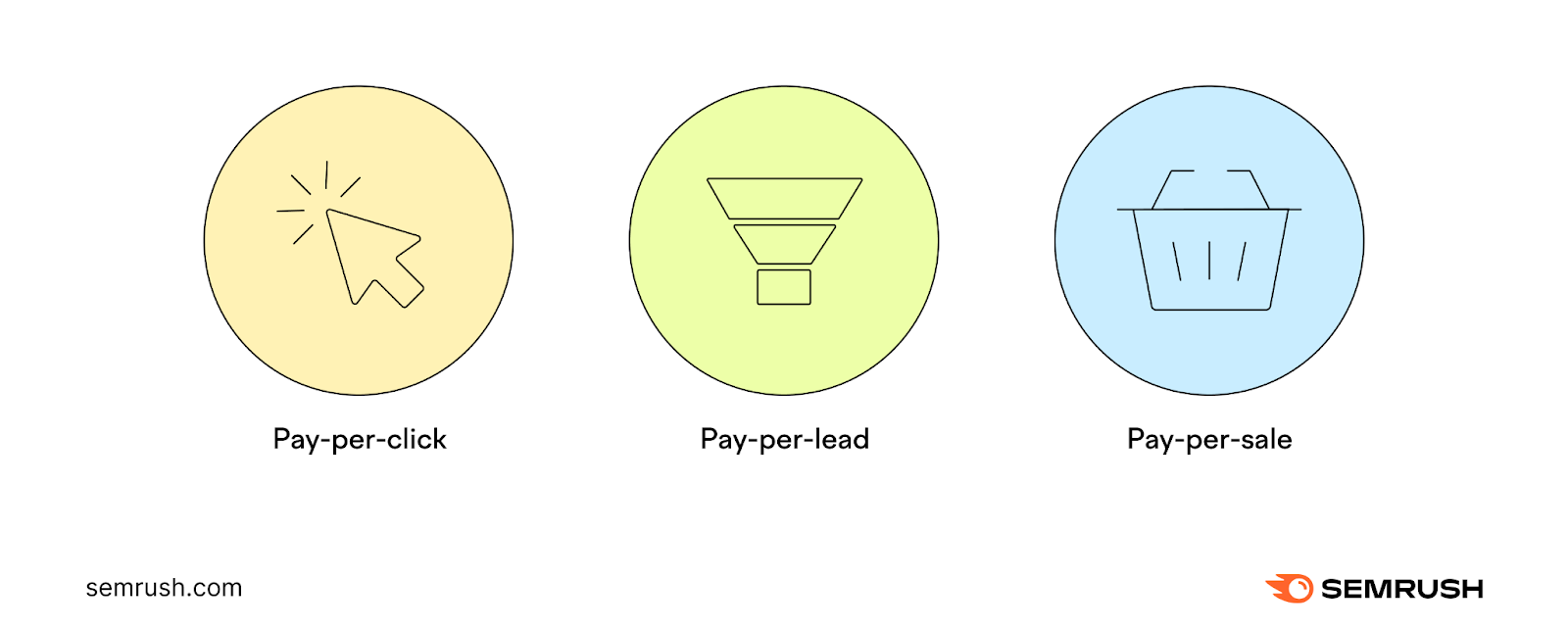
Pay-per-Click
Pay-per-click (PPC) affiliate marketing allows you to earn a commission for every click on an affiliate link. Even if it doesn’t translate to a sale or other type of conversion.
This type of payment system is rare. And if you do find a program or company that’s willing to use it, your commission for each click will likely be incredibly small.
Pay-per-Lead
With pay-per-lead (PPL) affiliate marketing, affiliates earn a commission for generating qualified leads for the merchant.
PPL allows you to earn either a fixed commission or a percentage-based commission for each lead you refer, regardless of whether it results in a sale.
Pay-per-Sale
Pay-per-sale (PPS) affiliate marketing involves getting paid a commission based on every sale that comes from your referral link. And it can be a percentage of the sale value or a fixed rate.
Fixed rates are popular because of their simplicity. Both parties have a clear understanding of what they can expect.
Our Semrush Affiliate Program uses a PPS fixed fee commission structure at different stages of the customer journey.
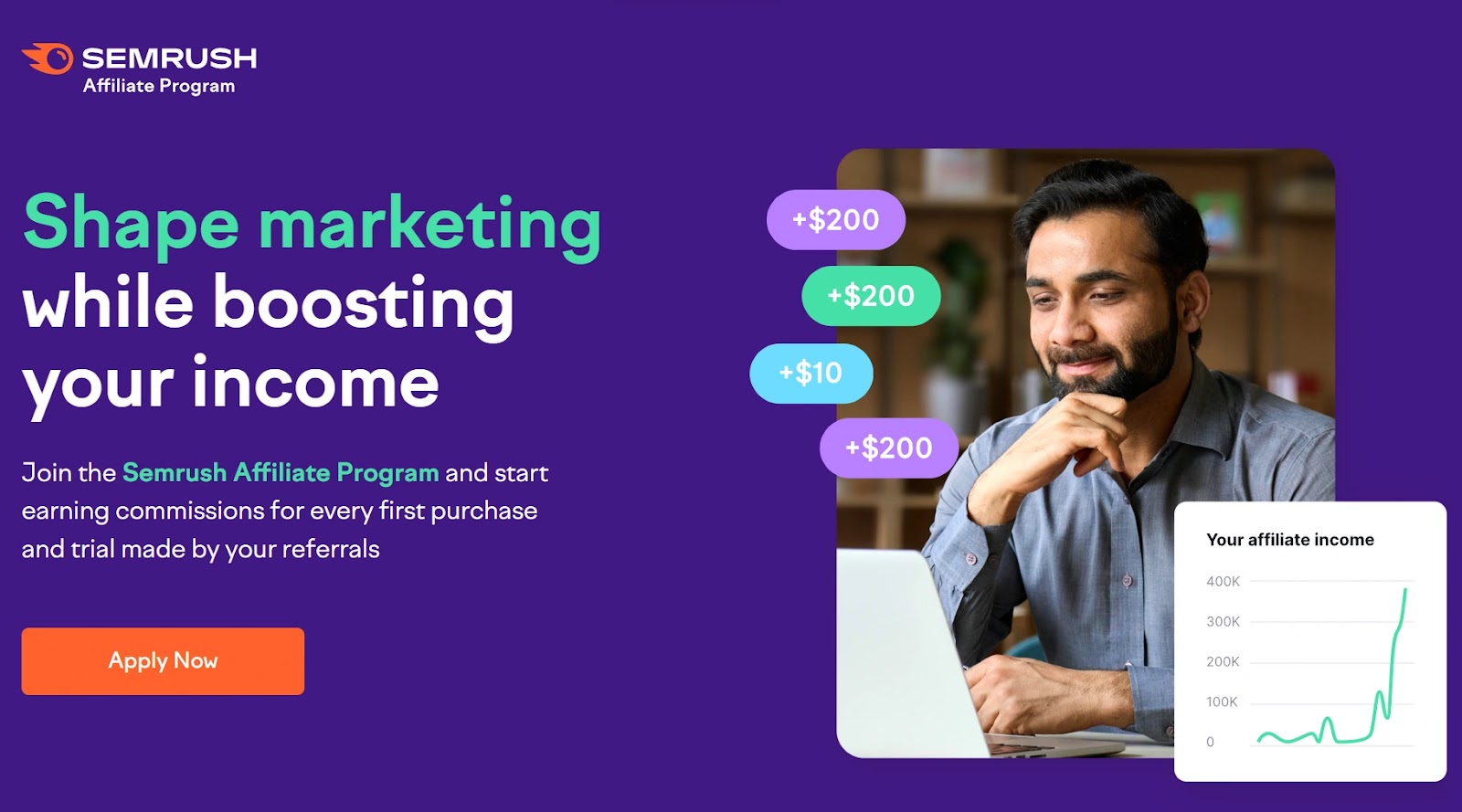
But many programs like Amazon Associates opt for the percentage. And the exact percentage varies across different product categories.
How Much Do Affiliate Marketers Earn?
Earnings from affiliate programs can vary greatly—PayScale indicates a range of $41K-$77K in the U.S.
It depends on the affiliate programs you join, the market niche and the products/services you promote, your target audience, and more.
For instance, affiliates in industries like finance, software, and online marketing tend to earn higher commissions compared to niches with lower-priced offerings.
And big-name influencers can earn thousands of dollars from a single social media post. Because of how many people they reach.
How to Start Affiliate Marketing: A Step-by-Step Tutorial
Here are five steps to get you on your path to becoming a successful affiliate marketer.
1. Pick a Niche to Focus on
If you’re new to affiliate marketing, you’ll need to select a niche that you’re interested in or have experience with.
For instance, the fitness niche if you previously worked as a personal trainer. Or SEO if you’re in digital marketing.
You can then use keyword research to identify specific topics that audiences are interested in. And that are likely to drive conversions.
Use Semrush’s Keyword Magic Tool for this.
Start by adding a seed keyword for your niche (we’ve used “dog food” here), select your location, and click “Search.”

The tool will then pull all the broad-match keywords for your topic as default. These are variations of your seed term with the words appearing in any order.
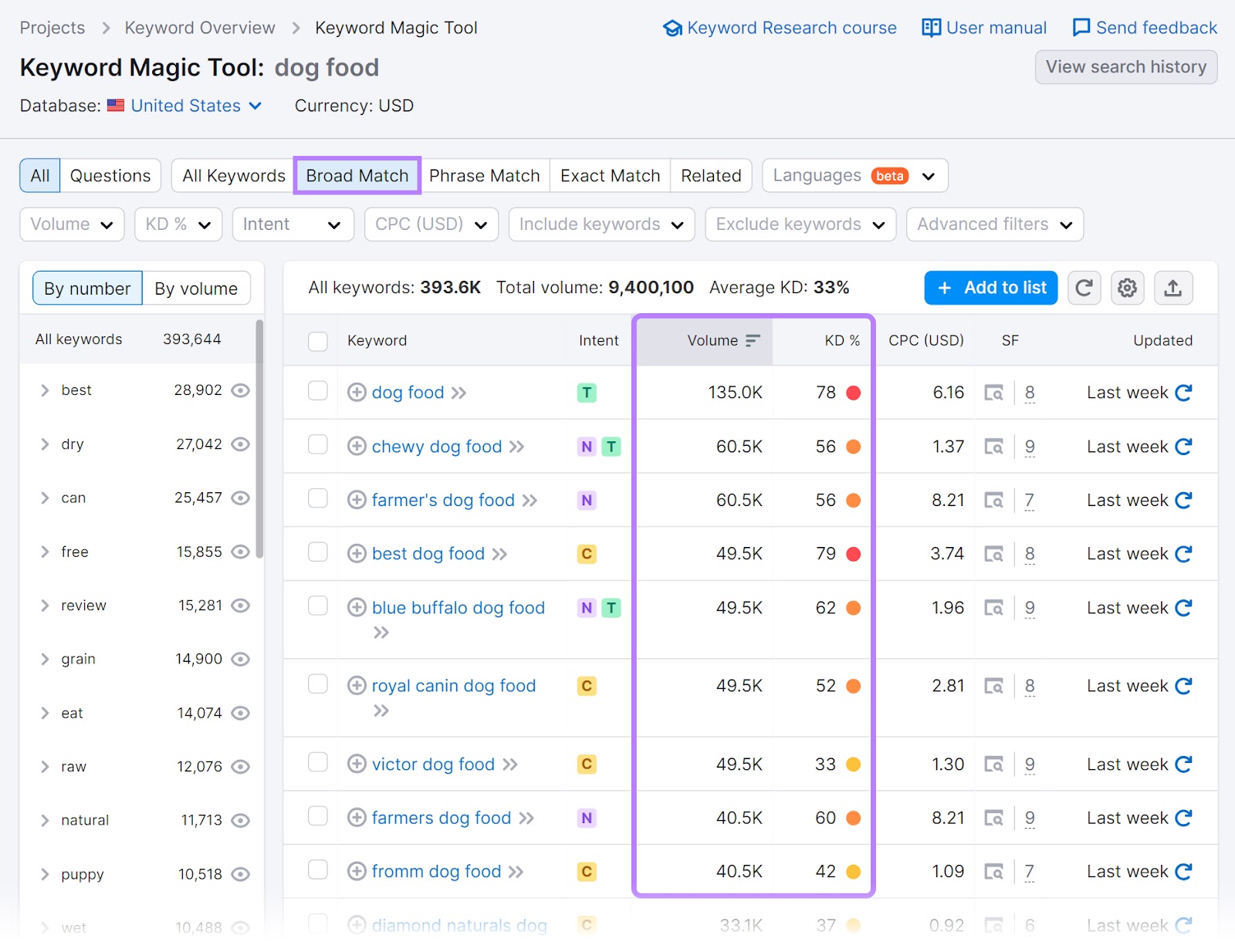
Each keyword will also show you the “Volume”—the average number of monthly searches for a given keyword over a 12-month period.
You’ll also see keyword difficulty indicated as “KD %”—which indicates how hard it would be to rank organically in Google’s top search results.
Pay attention to the “Intent” column as well. This indicates the general purpose behind a given query (called search intent).
Commercial keywords indicate the user is interested in researching products before making a purchase. And these types of terms—such as “best dog food for older dogs”—are great for producing product reviews you can monetize with affiliate links.
Also use informational keywords—like “how much food should I feed my dog”—to create helpful content for your audience. To build trust and establish your brand as an authoritative voice in your niche.
2. Choose Your Publishing Platform
To promote products or services, you need to have a platform (usually a website or social media profile) that allows you to share content with your audience.
For many creators, a website is a natural choice. And it’s easy to create one from scratch using a website builder like Wix or a content management system (CMS) like WordPress.
If you’re comfortable in front of the camera, you may also want to consider platforms that focus on video content to feature the products.
Video content can help you build trust with your audience when done right. So, show people how to use products, break down the pros and cons, and give them a genuine feel for what you’re endorsing.
You could also consider sharing affiliate links through podcast episodes or email newsletters.
3. Identify Profitable Products and Affiliate Marketing Programs
Now that you’ve chosen your niche and determined where you’ll promote products or services, find one or more affiliate programs to start monetizing your content.
Check out the brands you like to see if they have their own programs.
Sometimes, you can get links to a merchant’s affiliate program at the bottom of their website. Or, try a Google site search for “site:[merchantsite.com] affiliate program” to see if anything turns up.
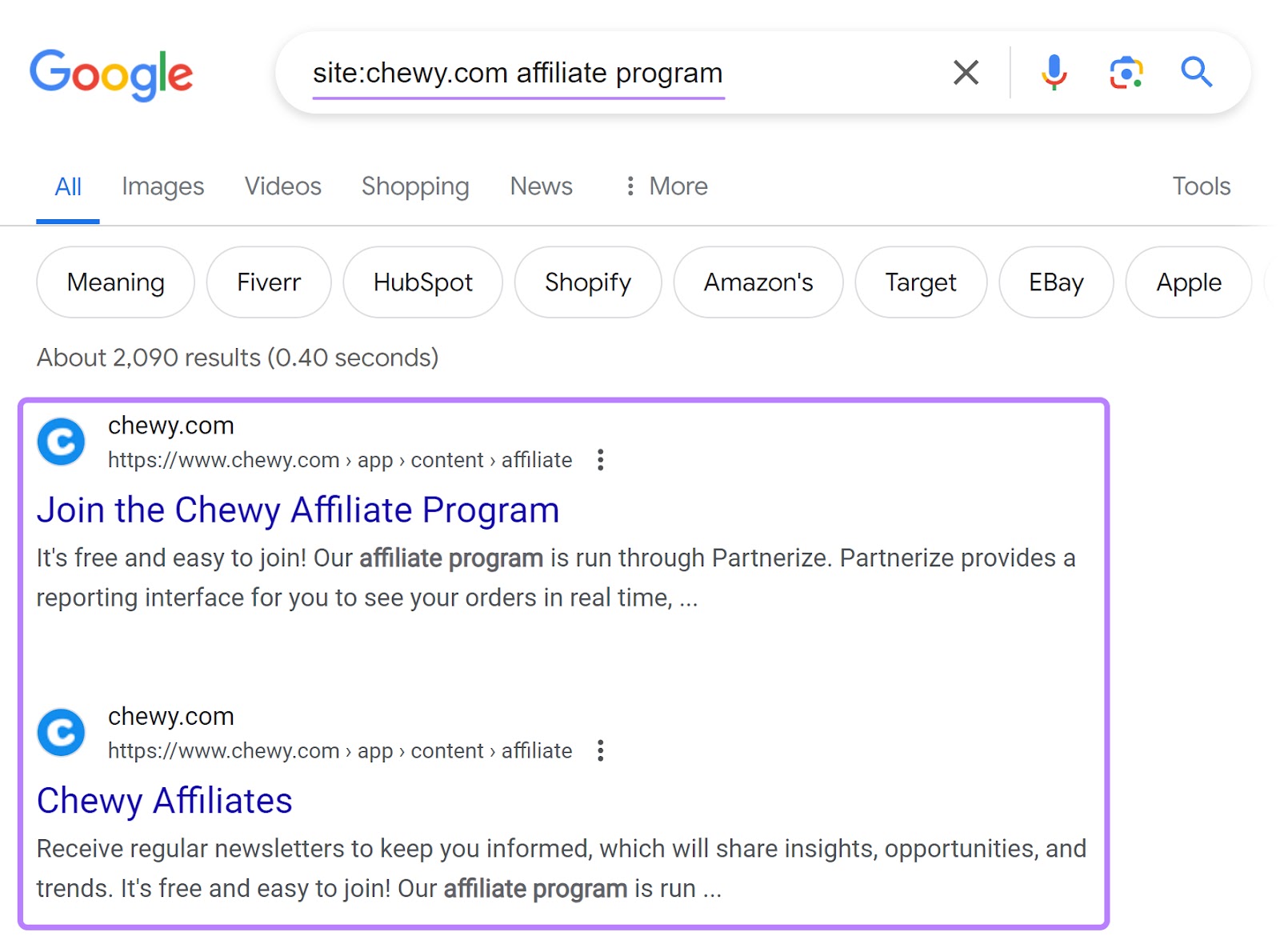
If you’re new to affiliate marketing and not sure which niche-relevant merchants are out there, try a Google search using the “allintext” operator for “[your niche] allintext: affiliate programs.”
For instance, “dog food allintext: affiliate program” will show results for sites in your niche that include the term “affiliate program” somewhere in their copy.
You might also consider joining a larger affiliate network—they connect you with merchants in your niche and handle your links and commissions in one place.
Popular affiliate networks include:
This option is great for getting started easily. But keep in mind that you often earn higher commissions by working directly with brands.
4. Promote Affiliate Products
In addition to focusing on promoting products or services that make sense for your niche and platform, be transparent about it.
Highlight the fact you’re using affiliate links and receiving income from the products you promote. And be clear that you receive compensation if they buy via your affiliate link.
Here are two examples of a typical affiliate disclosure:
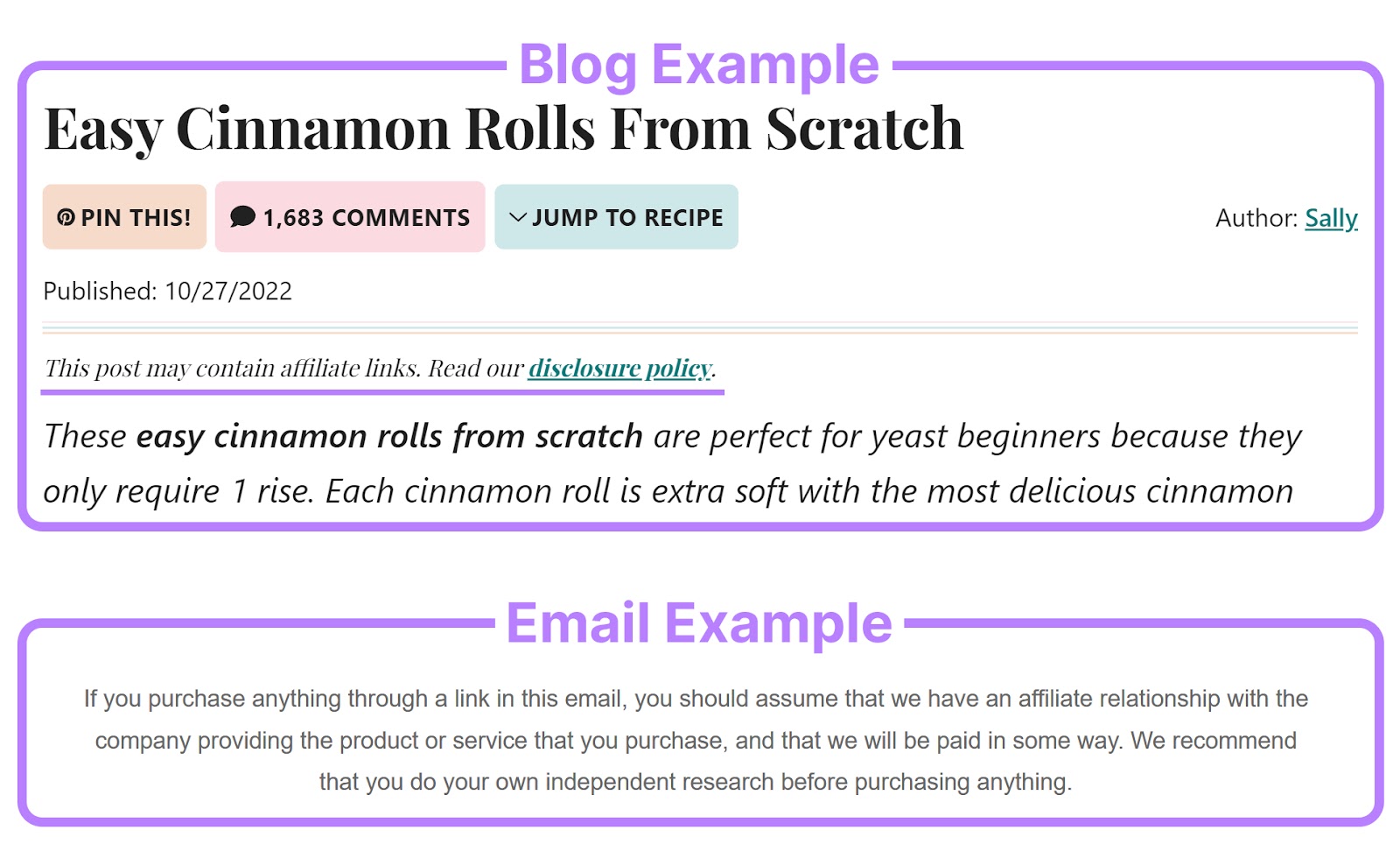
That doesn’t mean every product inclusion or review needs to be a heavy-hitting sales pitch. The content can (and often will) feel like what you would produce even without the affiliate link.
So, be honest about the products or services you’re promoting.
5. Measure and Optimize Your Performance
Some affiliate marketing programs include built-in analytics tools to track your performance. But it’s possible to keep track of what you can expect to earn on your own.
If you’re using social media to promote products or services, use the platform’s analytics to look into your performance.
For example, you can place your affiliate link in your Instagram bio and view the total number of clicks it got over a specific time frame using Instagram insights.
And if you’re posting affiliate links on your website, you can set up a key event in Google Analytics 4 to monitor how many visitors are clicking them.
If you’re not seeing the results you hoped for, take a look at your high-performing content to see what makes it stand out.
ImpactHero is great for determining which pieces of content on your site resonate the most with visitors.
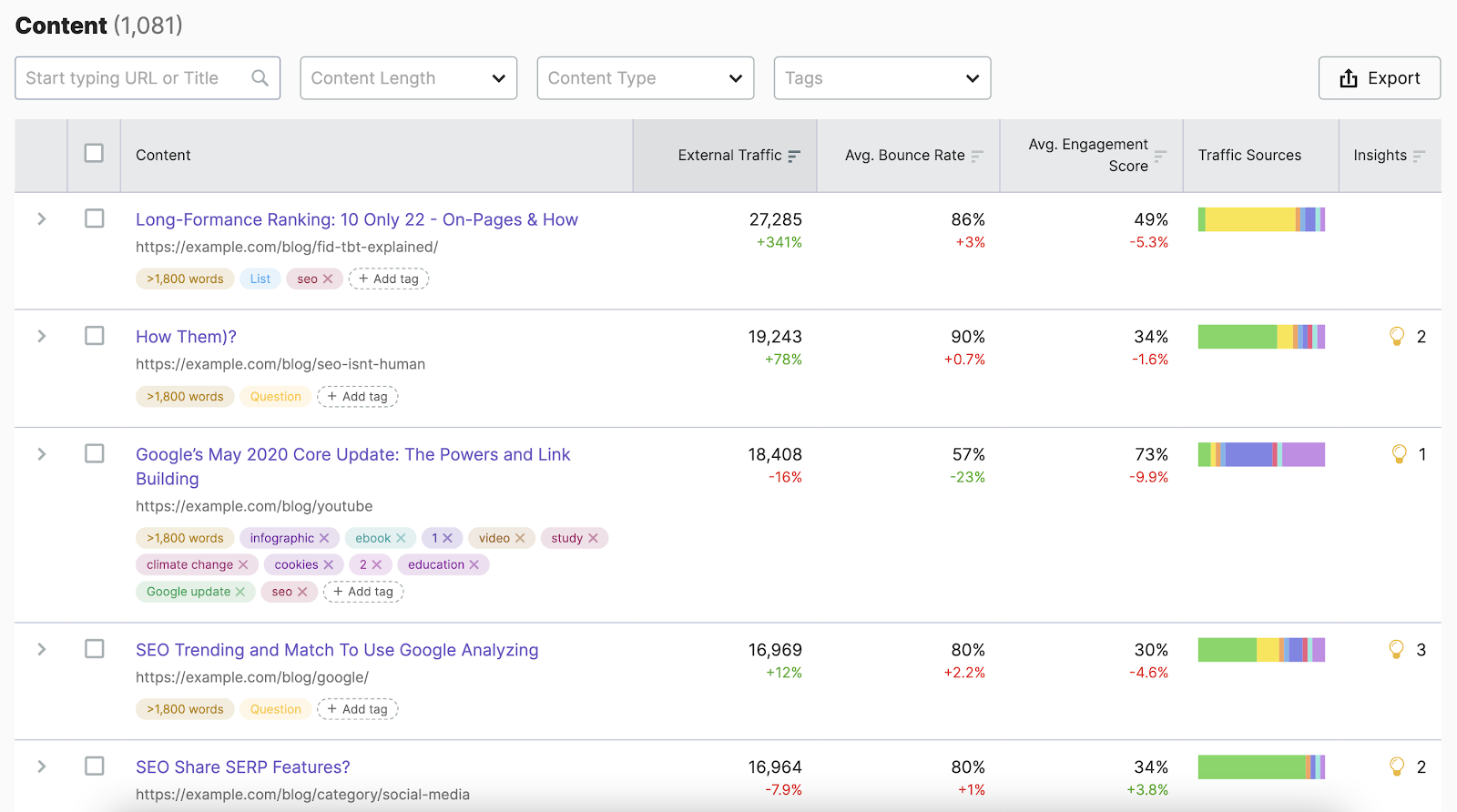
5 Tactics Affiliates Use to Maximize Their Earnings
Creating Helpful, Original Content
Publishing one-of-a-kind content that’s useful, relevant, and focused on the keywords you identified during your research is more likely to appear on search engine results pages (SERPs). And satisfy users who click through to your site.
If you’re specifically creating a review, show your audience what to expect from the product or service you’re featuring. To maintain their trust and align with Google’s guidance on reviews.
Go above and beyond the competition by creating content showcasing your recommendations through:
- Unboxing videos
- How-to tutorials
- Comparisons or roundups
This type of content is also valuable even if you’re not trying to attract visitors to a website.
If you’re creating for social media, content that’s genuinely helpful is more likely to resonate with your audience. And possibly translate to more commissions for you.
Tapping Into Multiple Channels
Having one platform you use is a great way to start earning affiliate income. But the most successful affiliate marketers tend to use multiple channels to target a wider audience.
For instance, video creators can expand beyond YouTube to create content for Instagram and TikTok—which has taken off for affiliate marketers worldwide.
TikTok is especially ideal if what you’re promoting targets a Gen Z audience.
And there’s even the TikTok Shop. Which makes it easy to produce monetized content through videos and live streams.
Further reading: TikTok SEO: The Ultimate Guide to Boosting Your Profile Visibility
Creating Seasonal and Event-Based Promotions
Seasonal and one-off events can inform your affiliate promotions. Whether it’s a national holiday or an event like the Olympic games.
This is a great way to join in on timely conversations and promote products or services relevant to your audience’s current needs and wants.
Plus, holidays and other seasonal events are often times when brands offer discounts. Which can boost your conversion rates.
Leveraging Paid Traffic
Running ads can be a great way to drive more visits to a site containing affiliate links. And the targeting options for specific demographics, interests, and behaviors allows you to reach people likely to be interested in the products or services you’re promoting.
For example, you could run search ads to drive people to your blog post with a recipe. Which contains affiliate links to several of the ingredients included in the recipe.
And unlike organic traffic, which takes time, paid ads can generate nearly immediate results. Which is especially beneficial if you’re promoting time-sensitive offers.
But it’s important to maintain the right balance between your advertising costs and your commission earnings. So you don’t overspend.
Building an Email List
Building an email list of people who are interested in your content gives you another avenue for promoting products or services. Because you can include affiliate links directly in the emails you send.
And you can keep your audience engaged with email marketing campaigns that include useful tips, updates about your brand, and upcoming promotions.
Affiliate Marketing FAQs
What Is an Affiliate Marketer?
An affiliate marketer is an individual or business that promotes products or services offered by another company (the advertiser or merchant) on one or more platforms.
In exchange, they earn a commission for each sale, lead, or action generated through their marketing efforts.
Is Affiliate Marketing a Legitimate Way to Make Money?
Affiliate marketing is a widely used marketing practice. Numerous businesses and individuals across industries use it.
But affiliates must maintain transparency and adhere to laws and regulations concerning advertising disclosure and consumer protection. And other ethical best practices.
How Fast Can You Learn Affiliate Marketing?
How quickly you pick up affiliate marketing depends on your motivation, prior marketing knowledge, the resources at your disposal, etc.
Some people may grasp the basics of affiliate marketing relatively quickly. Others may take more time to fully understand and implement effective tactics.
But it’s always easier if you know the products or services you’re promoting well. So, if you’re considering joining the Semrush Affiliate Program, familiarize yourself with the platform.
